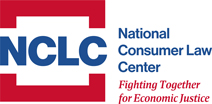FOR IMMEDIATE RELEASE: July 25, 2019
National Consumer Law Center contacts: Persis Yu (pyu@nclc.org) or Jan Kruse (jkruse@nclc.org); (617) 542-8010
U.S. General Accountability Office Report Misses the Mark on Income-Driven Repayment Plans
BOSTON- Today, the U.S. Government Accountability Office (GAO) released a report on the Department of Education’s process for verifying income and family size when determining income-driven repayment amounts.
For student loan borrowers struggling to repay their loans, income-driven repayment (IDR) plans are a lifeline that helps millions of people stay out of default. These programs allow borrowers to make payments based upon their income and family size. Government data shows that borrowers in IDR plans have lower delinquency rates than those in other repayment plans.
“Income-driven repayment works. Low-income borrowers need an easier path to income-driven repayment—not more bureaucracy,” said Persis Yu, director of National Consumer Law Center’s Student Loan Borrower Assistance Project. “The priority needs to be ensuring that student loan payments are affordable and accessible.”
Even though IDR is a vital lifeline for borrowers, a 2017 Consumer Financial Protection Bureau study found that a number of problems were keeping borrowers from accessing it. Research from the Department of Education revealed that more than half of borrowers in IDR plans did not complete their annual recertification on time, which can lead to a dramatic increase in payment amount, and ultimately default. The consequences of default, including wage garnishment, seizure of federal benefits, such as Social Security, and tax refunds (including the Earned Income Tax Credit) are particularly devastating to low-income borrowers and borrowers of color.
“Policymakers should implement commonsense measures, such as using the data that the government already has, to improve access to IDR for millions of student loan borrowers. We are glad to see the GAO recommend using tools, such as IRS data sharing, to improve implementation of income-driven repayment. However, its recommendation to require additional paperwork from the borrowers whom income-driven repayment is supposed to help misses the mark. This recommendation would make it harder for vulnerable borrowers to access the very programs designed to meet their needs,” said Yu.
For several years, a broad group of bipartisan policymakers and stakeholders have urged the U.S. Departments of Education and Treasury to implement an automatic recertification process that uses IRS data that is shared with the Department of Education. Such data sharing would not only improve access to and the quality of the IDR plans, but it could also be used to target benefits to borrowers who need IDR the most.
More Information on IRS Data Sharing
The Pew Charitable Trusts, Streamlined Data Sharing Could Help Millions Pay Back Student Loans, July 22, 2019
The Institute for College Access and Success (TICAS), A Popular Student Loan Fix Has Been Stalled for Years. It’s Time to Act, July 1, 2019
Related NCLC Resources
NCLC’s FOIA request to the U.S. Department of Education, July 1, 2019
Student Loan Forgiveness Cannot Work Without a Right to a Payment History, May 23, 2019
National Consumer Law Center Sues U.S. Education Department to Obtain Copy of Student Loan Servicing Contract, April 18, 2019
96 Out of 28,000 Borrowers Approved for Public Service Loan Forgiveness … What Does This Mean for Everyone Else?, October 5, 2018
Comments to CFPB on Proposal to Collect Student Loan Servicing Data (Federal and Private), April 24, 2017
Making Federal Student Loan Servicing Work for Borrowers, November 2014
